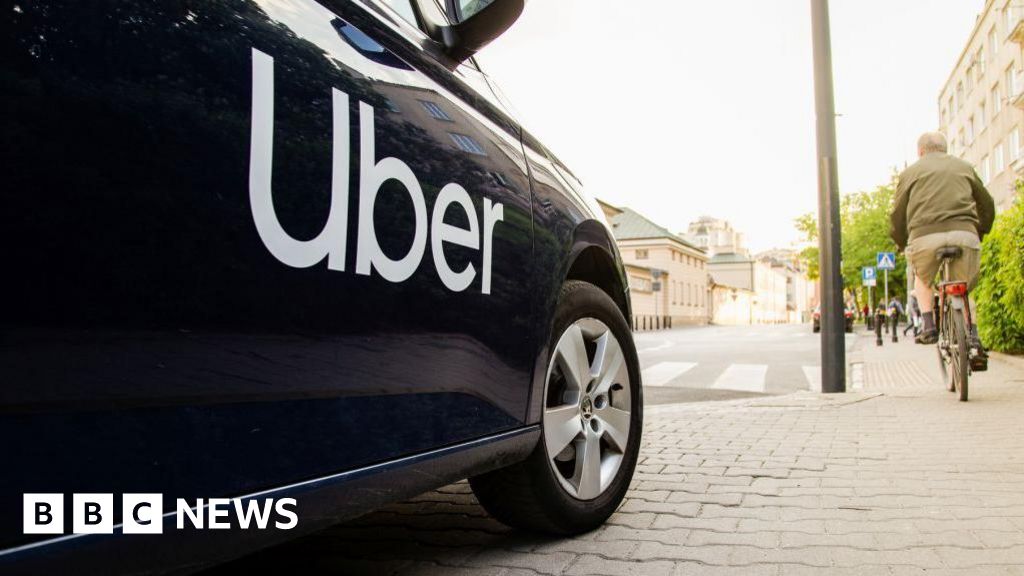Uber's use of dynamic pricing has led to higher fares for passengers and lower earnings for drivers, whilst increasing the company's share of revenue, a study has suggested. The University of Oxford study analysed data from 258 Uber drivers in the UK over more than 1.5 million trips between 2016 and 2024. It found there had been a "significant shift" when the company introduced a dynamic pricing algorithm in 2023, which it said meant "passengers now pay more per trip, but drivers' earnings have declined". Uber said some claims in the report were "totally false", adding that all drivers were shown their potential earnings for a trip before deciding whether to accept it. The study, which was carried out by researchers from the university's Computer Science department, said Uber's commission had risen from about 25% to 29% since its dynamic pricing model was introduced. In the same time, researchers found that drivers' hourly income fell from more than £22 to just over £19 - with drivers spending more unpaid time waiting for rides than before. Uber began operating in Oxford in February, despite private hire and black cab drivers warning the taxi app giant that it maystruggle to succeed in the city. Researchers said the study "highlights the widening gap between what customers pay and what drivers receive". "The higher the value of the trip, the more of a cut Uber takes. So the more the customer pays, the less the driver actually earns per minute," its lead author, prof Reuben Binns, explained. The study was commissioned by the Workers Information Exchange, which is run by former Uber driver James Farrar - who previouslysuccessfully campaignedfor the company's drivers to be treated as workers, rather than self-employed. Responding to the study, an Uber spokesperson said the company "do not recognise the figures in this report." They highlighted that drivers in the UK took home more than £1bn in earnings between January and March of this year, with all drivers receiving a weekly summary of their earnings, including a "clear breakdown of what Uber and the driver received from trips". On average across the week, the percentage kept by Uber has "remained stable for several years, but can vary from week to week and from one driver to another", the company said. "We are proud that thousands of drivers continue to make the positive choice to work on Uber as passenger demand and trips continue to grow," the spokesperson added. You can followBBC OxfordshireonFacebook,X (Twitter), orInstagram.
Uber's dynamic pricing means higher fares and lower earnings for drivers, study finds
TruthLens AI Suggested Headline:
"Study Reveals Impact of Uber's Dynamic Pricing on Driver Earnings and Passenger Fares"
TruthLens AI Summary
A recent study conducted by the University of Oxford has revealed that Uber's implementation of dynamic pricing has resulted in increased fares for passengers while simultaneously decreasing earnings for drivers. The research analyzed data from 258 Uber drivers in the UK and examined over 1.5 million trips between 2016 and 2024. The findings indicate a notable shift following the introduction of a dynamic pricing algorithm in 2023, which has led to passengers paying more per trip. In contrast, the earnings of drivers have seen a decline, with their hourly income dropping from more than £22 to just over £19. Additionally, the study highlights that drivers are now spending more unpaid time waiting for rides than they did prior to the changes in pricing structure. The increase in Uber's commission rate from approximately 25% to 29% has further exacerbated the disparity between what customers pay and what drivers receive for their services.
The lead author of the study, Professor Reuben Binns, emphasized that the dynamic pricing model has widened the gap between passenger costs and driver compensation. He noted that as the value of trips increases, Uber takes a larger cut, resulting in drivers earning less per minute of work. The study was commissioned by the Workers Information Exchange, an organization founded by former Uber driver James Farrar, who has been an advocate for drivers' rights and has campaigned for their reclassification as workers rather than self-employed individuals. In response to the findings, an Uber spokesperson disputed the accuracy of the report, asserting that drivers in the UK earned over £1 billion between January and March of the current year. They also mentioned that drivers receive a weekly summary detailing their earnings, including how much Uber retains from each trip. The spokesperson concluded by expressing pride in the continued growth of driver participation on the platform as passenger demand rises.
TruthLens AI Analysis
You need to be a member to generate the AI analysis for this article.
Log In to Generate AnalysisNot a member yet? Register for free.
